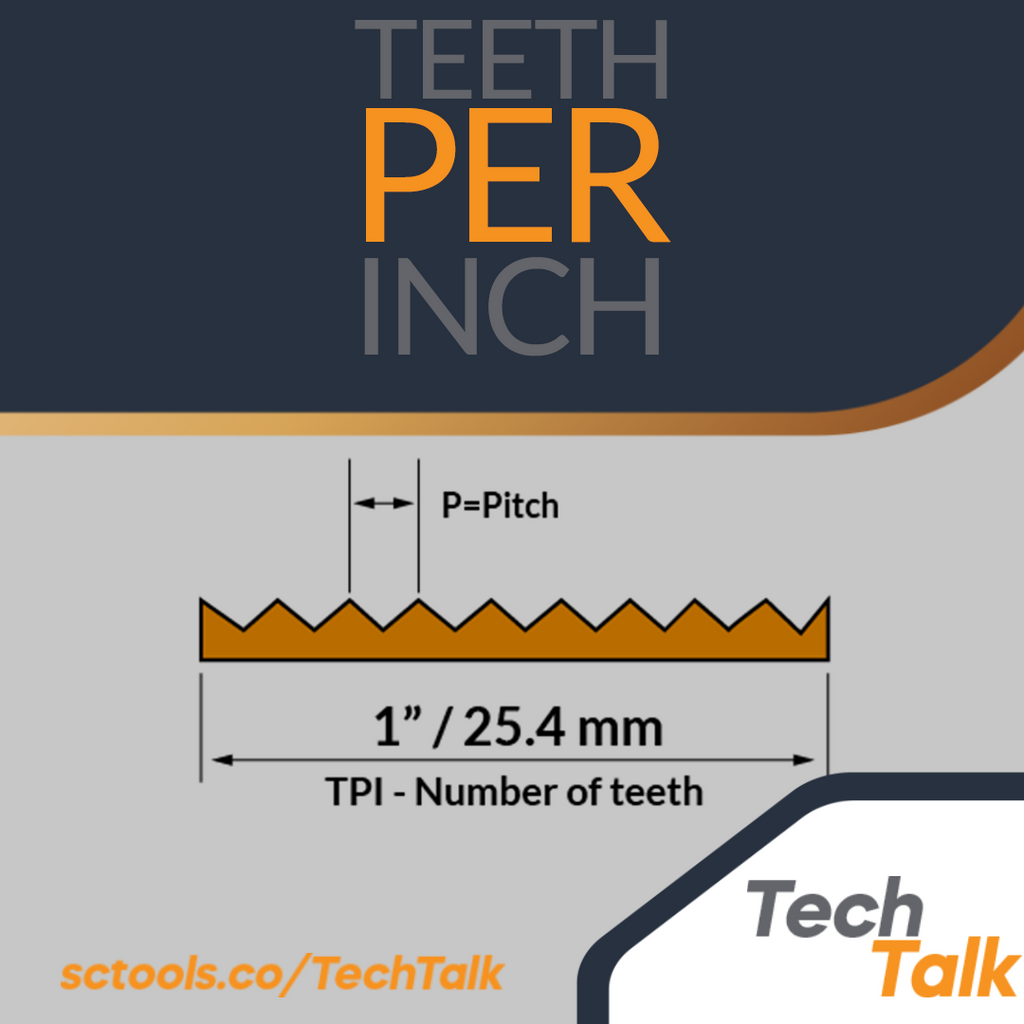Teeth are measured by the number of points per inch on a blade, and the number (TPI) is used to determine the coarseness of saw blades. This is the distance between the bottoms of the teeth, often known as the gullets.
To provide a little background on the history of TPI, the earliest use of the TPI was when measuring chain pitch on a non leg chain saw. The term "tooth per inch," in relation to chain saws, was likely coined in 1891 by Eli Whitney Blake of Portland-based Blake's Hardwood and Convenient Company in Oregon City.
The correct number of teeth per inch (TPI) for the thickness of the cutting material must be chosen. If the incorrect TPI is not selected, the blade life will be drastically shortened. The TPI is likely the most critical consideration when choosing a band saw blade.
What Does It Indicate When a Saw Blade Has More Teeth?
A saw blade with increased teeth produces a smoother cut, whereas one with fewer teeth produces a quicker cut. Other factors that influence cut quality and feed speed include how quickly you feed the material into the saw blade and how quickly the saw blade turns.
The material that the blade can cut is determined by the number of teeth per inch (TPI), the size of the arch, and the breadth and depth of the gap between the teeth. Low TPI blades are great for cutting wood because they give quicker cuts with rougher edges.
Which TPI Is Best for Cutting Metal?
When cutting thick metal (greater than 1/8′′), a 14 TPI blade will cut faster than an 18 TPI blade. Speed testing is based on hand cutting and is an approximation. For uniformity, hacksaw blades are used.
Which TPI Is Ideal for Cutting Wood?
For sawing wood and cutting heavier stock up to 8 inches, use a coarse tooth blade (2.3 TPI). For metals and plastics that are thinner and under 1/4′′, a fine-tooth blade (18 to 32 TPI) should be utilized. For basic 3/4′′ wood cutting, 4 TPI will produce a rapid cut, while 14 TPI will provide a slower cut with a smoother finish.
What Type of Blade Is Used To Cut Steel?
A saw blade (teeth) uses carbide cutting edges to cut steel. A circular saw blade is a serrated-edged metal disc. The disk is fed into a machine, which rotates it. Wood and other materials are sliced with this tool.
What Is the Optimal Number of Teeth for a Saw Blade?
Blades with more teeth provide a smoother cut, whereas blades with fewer teeth quickly remove material. A 10′′ ripping blade, for example, may have as few as 24 teeth and is designed to remove material along the grain's length swiftly.
How Can I Figure Out How Many Teeth TPI I'll Need?
- Make sure you have the right tooth size for the job.
- To get the most blade life and efficiency out of your reciprocating saw blades, match the right tooth size with the material being cut, just like you would with any other toothed linear edge cutting instrument.
- According to the rule of thumb, at least three teeth should be involved in the task at all times. The ideal number of teeth involved in the task is six to 12.
- When using a big tooth, such as a ten tooth per inch blade to cut a thin-walled electrical conduit, the teeth tend to straddle the narrow part, making it relatively simple to strip teeth.
- There isn't enough room in the tooth gullets to draw out the chips if the teeth are too tiny for the job. This might result in early tooth dulling and peeling.
To determine the correct TPI, use the SCTools TPI calculator or TPI conversion table to assist you in identifying the suitable blade for your application. Please feel free to contact our SCTools representative if you have any questions about the conversion process.
 |
If you have any questions about carbide cutting tools, end mills, drills, etc. be sure to reach out to us @ sctools.co/Home or call us at (877)737-0987. We help you machine better! |



Comments (0)